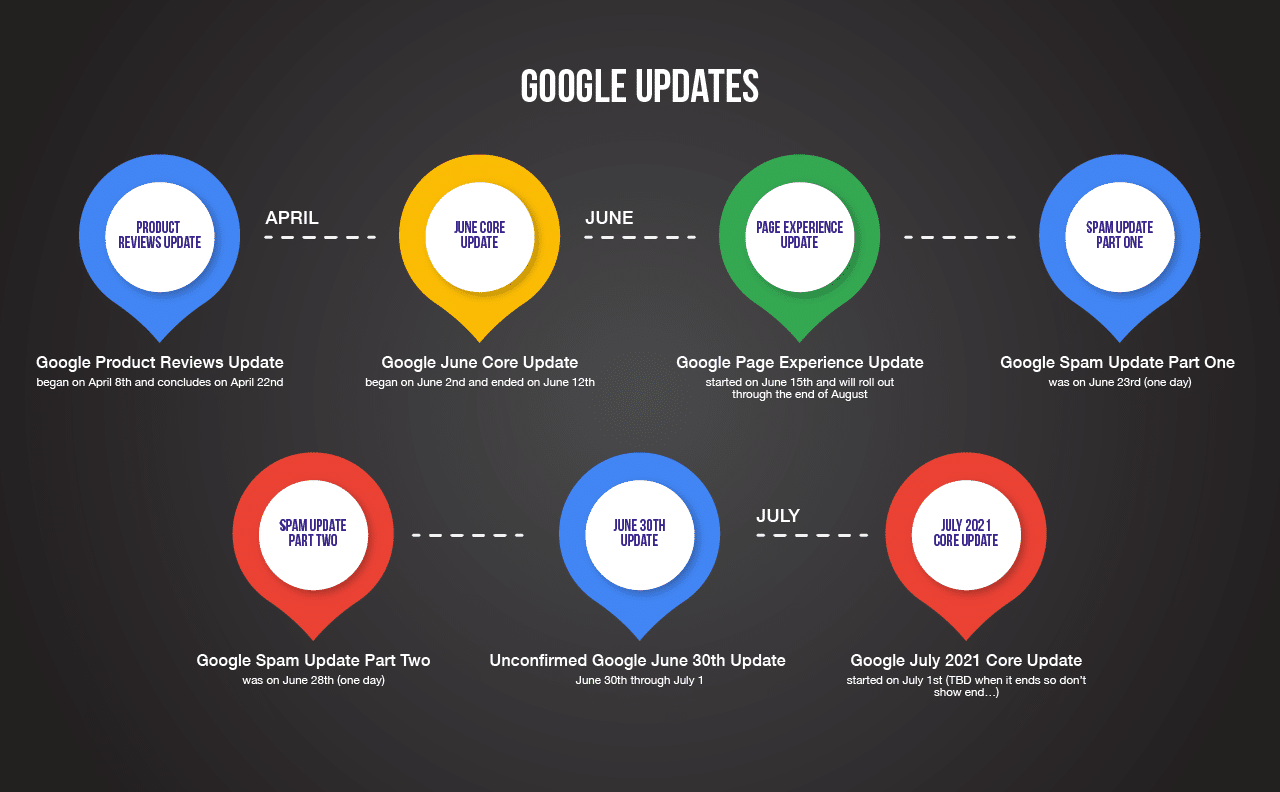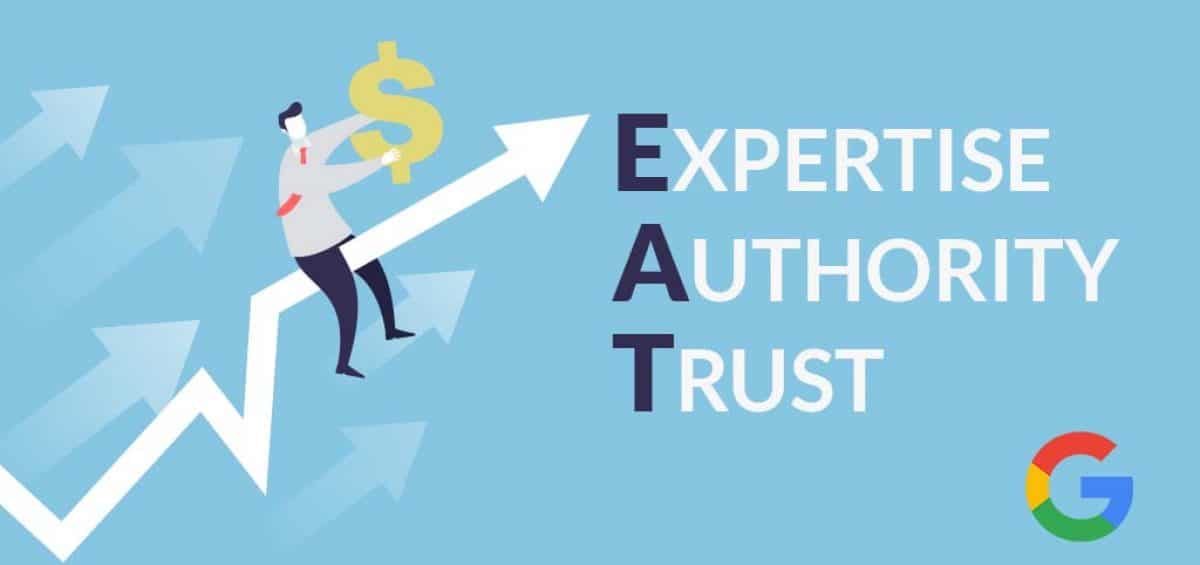Google releases several algorithm updates every year, and these changes can have a significant impact on your SEO efforts. In other words, it affects how many eyes will reach your content.
So, how do you keep up with the ever-changing algorithm? Let’s go over some general best practices for ensuring your content stands up to any and all future changes.
How Often Does Google Update Its Algorithm?
Google is well-known for rolling out algorithm updates left and right. On average, there are upwards of 3,000 changes made per year. That being said, the majority of updates are minor improvements that may not be of interest to most content creators and typically go unnoticed.
However, Google also launches several significant changes every year, referred to as “core updates.” Often planned months in advance, these critical components of Google’s ranking algorithm are designed to enhance the quality and relevance of overall search results. As many digital marketing experts know, these updates are notorious for drastically affecting SEO, for better or for worse.

Check out our ultimate timeline of Google algorithm updates >
Content Creation Best Practices
Simply put, it’s not enough to just produce high-quality content nowadays. Many businesses succeed at creating engaging and valuable content for their target audience—but that doesn’t automatically make it long-lasting, high-ranking content in the eyes of the algorithm.
To ensure your content outlasts future algorithm updates, you’ll need to play by Google’s rules. Follow these best practices and learn how to create the content you need for ongoing success.
Focus on Quality
Regardless of Google algorithm updates over the years, quality is the key to generating inbound traffic. To create truly valuable content, you must have subject matter that is beneficial to the user—whether that be educational information, unique insights, proven research, new ideas, etc.
Additionally, if your content is presented neatly and accurately, your message is far more likely to get across. Avoid any errors that might make visitors click away. The top reasons that users are likely to leave a webpage include:
- Broken links and forms
- Spelling and grammar mistakes
- Outdated information
- Misleading/irrelevant title
- Poor format, design, or usability
- Not mobile-friendly (bad UX design)
- Overwhelming ads or pop-ups
But more importantly, you must have high-quality content by the algorithm’s standards in order to climb the ranks and beat your competitors. Here are three few red flags Google looks for when ranking websites.
1. Poor On-Page Optimization
Elements like keywords and page titles play an important role in helping the algorithm determine what your content is about. Fortunately, it doesn’t take long to optimize title tags, image tags, meta descriptions, URLs, and XML sitemaps.
2. Thin Content
Simply put, thin content is on-page content that is not useful to visitors. This includes doorway pages, affiliate pages, irrelevant guest posts, and content that is automatically generated or stolen from another online source.
3. Insufficient Links
Not only do you need great content to gain Google’s approval and achieve high ranks, but you also need great links. The more high-value links your site has, the better your web presence. You’ll also want to avoid bad link-building practices to stay on Google’s good side.
Overall, Google favors meaningful, quality content related to the keywords you’re ranking for.
Understand the E-A-T Perspective
Ultimately, Google wants to give its users the best search engine experience possible, which is why it takes careful precautions to only promote trustworthy domains. As a result, Google’s perception of a business often correlates with the impression left on its target audience. So, how can you tailor your content to meet Google’s standards?
Google measures three main factors when determining how much trust should be placed in a particular brand or website—Expertise, Authority, and Trust—also known as E-A-T. The concept of E-A-T has been around for nearly a decade, yet many industry experts still struggle with it today.

- Expertise – Expertise means to have exceptional knowledge or skill in a particular subject. Google tends to favor content created by subject matter experts. Simply put, the content on your site must demonstrate a higher level of expertise than the competition.
- Authority – Authority is all about reputation, typically among industry experts and influencers. When people see an individual or website as the go-to source of reliable information on a subject, that constitutes authority.
- Trust – Trust is about the accuracy, legitimacy, and transparency of a webpage’s content. Citing trustworthy sources is a big part of building trust with Google. Including publisher contact information is also helpful.
What exactly determines E-A-T? Google typically looks at a combination of the content, creator, and website. Therefore, the algorithm is constantly being trained to look for these variables when deciding which web pages to promote in search results.
Keep Reader Intention in Mind
Unlike Google, people don’t generally care about links and tags. They’re just searching for content that meets their needs. Therefore, you must tailor your content to your specific audience to achieve the best results. Ask yourself these questions to better understand Google audience targeting.
- Who is your target audience?
- What problems are they trying to solve?
- What writing style appeals to them most?
- How can you earn their trust?
Once you know your audience, all you have to do is create content they are specifically searching for. The best content creators know what strategies to use to boost reader engagement and drive traffic.
For example, you can incorporate descriptive language into your writing to create an image in the reader’s mind and fully immerse them in your work. Likewise, using figurative language can transform ordinary content into an enhanced experience.
Follow these steps successfully, and the algorithm will reward your efforts with high ranks and leads for your business!

What About Future Google Algorithm Updates?
At this rate, it’s clear that Google won’t be slowing down on the updates anytime soon. And with thousands of algorithm changes per year, it’s impossible to keep up with all of them. It’s true that most updates won’t affect you, but it’s a mistake to ignore them entirely—especially the big ones.
Ultimately, it’s crucial that marketers and content creators know when major changes in the algorithm happen. It’s the only way to understand whether rankings shifted because of an internal change or a Google update.
So, do you have a proactive or reactive digital content strategy when it comes to Google algorithm changes? To ensure your content survives future search updates, you’ll need to raise the bar.
Get ahead of the algorithm and put your best foot forward with the content optimization tips mentioned in this article. Or if you’re not ready to take on that challenge, you can always recruit the help of an outsourced marketing agency that knows its way around the algorithm.
Contact us today to learn more about our SEO services in Houston and Austin, TX.
